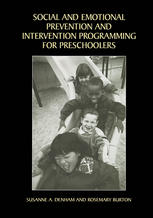

Most ebook files are in PDF format, so you can easily read them using various software such as Foxit Reader or directly on the Google Chrome browser.
Some ebook files are released by publishers in other formats such as .awz, .mobi, .epub, .fb2, etc. You may need to install specific software to read these formats on mobile/PC, such as Calibre.
Please read the tutorial at this link: https://ebookbell.com/faq
We offer FREE conversion to the popular formats you request; however, this may take some time. Therefore, right after payment, please email us, and we will try to provide the service as quickly as possible.
For some exceptional file formats or broken links (if any), please refrain from opening any disputes. Instead, email us first, and we will try to assist within a maximum of 6 hours.
EbookBell Team

5.0
28 reviewsSocial and Emotional Prevention and Intervention Programming for Preschoolers rests on the idea that young children, under optimal circumstances, develop substantial abilities in social and emotional domains by the time they enter school. These abilities contribute to their success and well-being during these early years, but even more importantly, to both their successful adaptation to school (personal and academic) and their long-term mental health.
The chapters of this volume present theoretical foundations for and explanations of what important adults in young children's lives - preschool teachers, daycare providers, parents - can do to encourage the development of such social-emotional abilities, including promoting secure attachment relationships, providing positive behavior guidance, and assisting children in developing emotion knowledge, emotion regulation, social problem-solving skills, and other positive social behaviors.
In addition, the book reviews the current state of early childhood programming in each of these crucial areas, with the addition of a chapter on emergent parent programming on emotion coaching. Recommendations are made for making such programming work, for assessing individual children's development and program efficacy, and necessary future directions for this area are detailed.